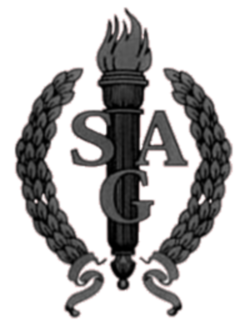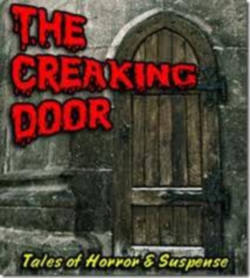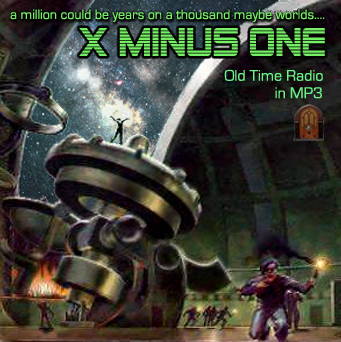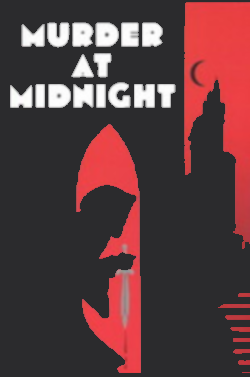The Screen Guild Theater:
Arsenic and Old Lace (11/25/46)
The Creaking Door:
Day Of Truce (10/12/64)
X Minus One:
Junkyard (02/22/56)
Murder at Midnight:
The Ape Song (03/31/47 )
Right Click here to download
![]()
The Screen Guild Theater – Arsenic and Old Lace from November 25, 1946.
The Screen Guild Theater was a popular radio anthology series during the Golden Age of Radio, broadcast from 1939 until 1952, with leading Hollywood actors performing in adaptations of popular motion pictures such as Going My Way and The Postman Always Rings Twice.
The show had a long run, lasting for 14 seasons and 527 episodes. It initially was heard on CBS from January 8, 1939 until June 28, 1948, continuing on NBC from October 7, 1948 until June 29, 1950. It was broadcast on ABC from September 7, 1950 to May 31, 1951 and returned to CBS on March 13, 1952. It aired under several different titles: The Gulf Screen Guild Show, The Gulf Screen Guild Theater, The Lady Esther Screen Guild Theater and The Camel Screen Guild Theater.
Actors on the series included Ethel Barrymore, Lionel Barrymore, Ingrid Bergman, Humphrey Bogart, Eddie Cantor, Gary Cooper, Bing Crosby, Bette Davis, Jimmy Durante, Nelson Eddy, Douglas Fairbanks Jr., Clark Gable, Judy Garland, Gene Kelly, Johnny Mercer, Agnes Moorehead, Gregory Peck, Fred Astaire, Frank Sinatra and Dinah Shore. Fees these actors would typically charge were donated to the Motion Picture Relief Fund, in order to support the creation and maintenance of the Motion Picture Country Home for retired actors.

Badge of the screen Guild
Arsenic and Old Lace is an appaption of the 1944 Joseph Kesselring‘s play of the same name. The script adaptation was by twins Julius J. Epstein and Philip G. Epstein the film was accualy made in 1941, but it was not released until 1944, after the original stage version had finished its run on Broadway. The lead role of Mortimer Brewster was originally intended for Bob Hope, but he couldn’t be released from his contract with Paramount. Frank Capra also approached Jack Benny and Ronald Reagan before going with Cary Grant. Boris Karloff played Jonathan Brewster, who “looks like Karloff”, on the Broadway stage, but he was unable to do the movie as well because he was still appearing in the play during filming, and Raymond Massey took his place but did return for this radio play.
![]()
The Creaking Door – Day Of Truce October 12, 1964.
The Creaking Door was an old-time radio series of horror and suspense shows originating in South Africa 1964-65.
The show was South African Radio’s shot at thrillers with a supernatural bent. In the vein of the Americans show Inner Sanctum. The Creaking Door , however, despite its obvious connection to the American series stands on its own as a unique, well-produced, engaging supernatural thriller series. The emphasis on high production values is perhaps the very reason that several early, morally challenged Radio traders felt they could get away with interspersing many of the Creaking Door episodes with their Inner Sanctum, Mysterious Traveler, and Strange Dr. Weird offerings to a still naive community of radio recording collectors. Although somewhat left-handed, it’s still a compliment to both SABC and Springbok Radio that those early ‘otr hooligans’ managed to get away with the practice for well over 20 years.
That takes nothing away from this excellent series in its own right. The expositions were deftly introduced and shaded with just the right amount of chilling narrative. Not quite as chilling and melodramatic as Raymond Johnson, perhaps, but Peter Broomfield rightly camped up his delivery for The Creaking Door, and it worked. Indeed, given the reported conservative budget of each episode, it’s a tribute to The Creaking Door’s producers that they managed to tease so much quality out of such relatively humbly funded productions. Circulating The Creaking Door productions remain a highly engaging tribute to the supernatural thriller genre and, as such, continue to be a highly sought after series. Definitely still a compelling, ‘lights-out’ listening experience for young and old alike.
It was sponsored by State Express 555 (pronounced “State Express Three Fives”) cigarettes, a British American Tobacco product.
(The above is mostly taken from the entry at Digital Deli)

This story opens at the graveside of the funeral of a local gangster. Everyone’s there, his gang, his loyal soldiers, his rivals in the gang, the Coppers and members of a rival gang,everyone observing a “Day of Truce”. And subsequently, the greedy ambitions of one mobster in particular. Oh, and there’s a ghost. But maybe I shouldn’t mention that because, maybe there is and maybe there isn’t.
![]()
X Minus One – Junkyard, from February 22 of 1956.
X Minus One is considered the finest science fiction drama ever produced for radio. It was not the first. That honor belongs to 2000+. It wasn’t the second, That would be Dimension X. In fact the first 15 episodes of it’s 1955 to 1958 run on NBC were new versions of Dimension X episodes. The remainder were all most entirely adaptations of recently published science fiction stories (Mostly from Galaxy Science Fiction Magazine) usually written by the leading writers of the time, including Philip K. Dick, Fritz Leiber, J.T. McIntosh, Robert A. Heinlein, Frederik Pohl and Theodore Sturgeon.
For all of us who were weaned on The Outer Limits and The Twilight Zone and for the Trekkies (er,Trekkers) among us, you should know that X Minus One is the forefather of the science fiction you grew up on. You will find that it still is some of the best Science Fiction ever aired.

this is the adaptation of a short story by Clifford D. Simak of the same name which was published in the May, 1953 issue of Galaxy Science Fiction.
It concerns a spaceship crew exploring a planet they’ve spied from afar, and what looks to them to be a pile of junk. upon investigation one after another the crew begins to exhibit memory loss, and soon can’t remember how to start the ship’s engines for take-off.
Clifford D. Simak (1904-1988) was one of the science-fiction’s most beloved writers. a longtime friends of Gordon R. Dickson and Poul Anderson, he was honored as SFWA’s third Grand Master in 1977 (for the year 1976 in this honor he was preceded by Robert A. Heinlein and Jack Williamson. This is exalted company indeed! And Clifford D said Mac is not out of place among them. He also won the International Fantasy Award for his classic 1953 Novel City, and was given the Bram Stoker Lifetime Achievement Award in 1988.
His other awards include three Hugo trophies (“The Big Front Yard”–1959, Way Station–1964, and “Grotto of the Dancing Deer”–1981), and a Nebula Award, also for “Grotto of the Dancing Deer” in 1981.
![]()
Murder at Midnight – The Ape Song first aired on March 31 of 1947.
Produced in New York, Murder At Midnight was heard over the Mutual Network starting on Sept. 16th of 1946 until Sept. 8th of 1947. Produced by radio station WJZ. The show was known to occasionally reproduce scripts that had been performed on Inner Sanctum. This practice allowed the show to feature tales of murder most macabre by some of radio’s top writers without paying top dollar.
The show was filled with tales of death and mayhem, not always at midnight. The show was hosted by Raymond Morgan who had a memorable introduction as he intoned, “… The witching hour, when night is darkest, our fears the strongest, our strength at it’s lowest ebb. Midnight when the graves gape open and Death strikes”.
The cast featured Elspeth Eric, Mercedes McCambridge, Barry Kroeger, Betty Kane, Carl Frank, Barry Hopkins, Lawson Zerbie. Charles Paul played the creepy organ music, and Anton M. Leader directed.
I have grown to love “Murder at Midnight”. Certainly I Know that the show is often silly. But it has cultivated the grace of Camp. The program is far more “Noir” than it’s sister program Inner Sanctum taking as, it does, a more hard-boiled approach to the supernatural.

Leave a comment